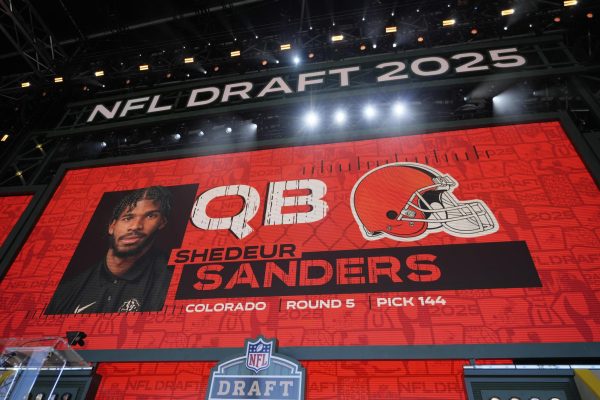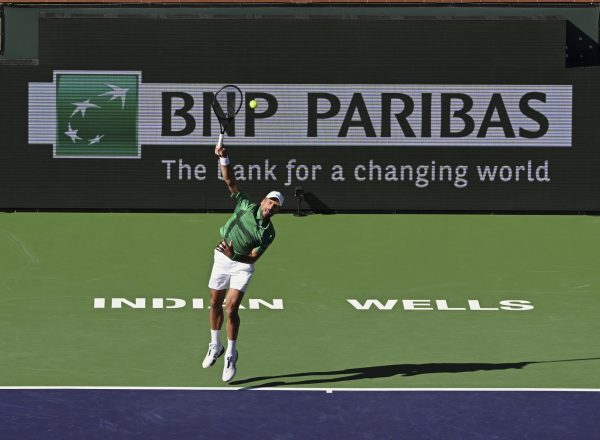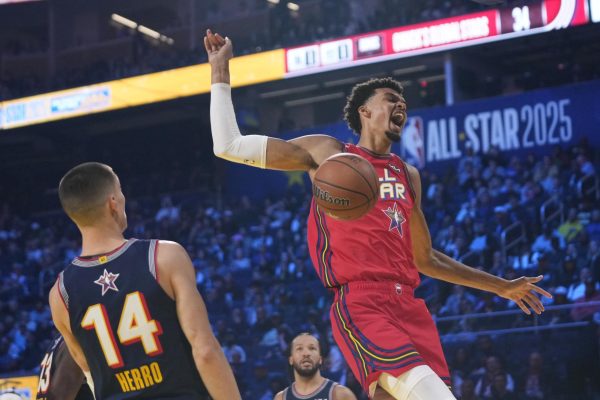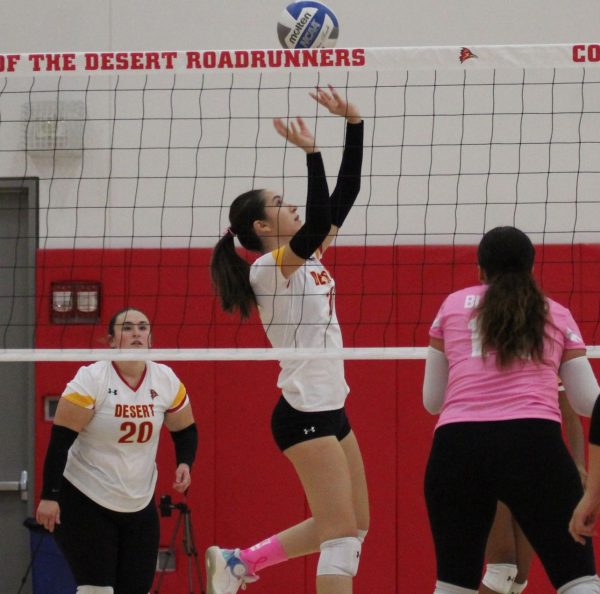Hockey 101: A beginner’s guide to ice hockey
With the new Firebirds hockey team calling Coachella Valley home, many residents will need to know a bit about the game.
The Coachella Valley Firebirds are the first hockey team ever in the Coachella Valley. The Firebirds are coming off a 5-3 victory against the Calgary Wranglers. The Firebirds are off to a hot start, as they are at 4-2-0.
With the Firebirds making their home debut on Dec. 18, there will be many newcomers to the game of hockey. That said, it would be a good idea to go over the ice itself, different positions, and some of the rules.
Hockey is a game of zones. It is comprised of three zones; defensive, neutral, and offensive. Whenever the puck is in your defensive zone or the zone with your team’s goaltender in it, you want to get the puck to the neutral zone or the offensive zone. In the neutral zone, you battle for possession to attack the offensive site. When you can get the puck in the offensive zone, you want to keep the puck in there and score. A team’s main objectives are when the puck is in each zone.
There are six players on each team at a time. There is a center, left and right winger (forwards), two defensemen, and a goalie. The primary role of the center and forwards is to score as much as possible. The two defensemen and the goalies’ job is to prevent scoring. However, there are no restrictions to what the positions can do besides the goalie. A defenseman can take the puck down the ice and score if they want to, and the wings can swap to play defense. Overall, the positions are given to players based on their size and skill set. However, hockey is spontaneous, and players can play to their strengths.
The most essential thing to know about hockey is the faceoff. Many faceoffs occur throughout a hockey game. To start a game, the two centers meet in the neutral zone or center, and a referee drops the puck in the middle of the two, and they battle for possession of the puck. Faceoffs can also occur whenever there is a stoppage of the game. This includes whenever there is a goal, offsides, icing, the beginning of a period, or other penalties.
The two most common penalties for someone to know is offsides and icing.
Offsides are when both players skate across the blue line before the puck completely crosses the blue line. A player must keep one of their skates on or behind the blue line to avoid the penalty while entering the attacking zone. Once the player follows this rule, the rest of the attacking team can enter the attacking site. Since hockey moves so fast, there are dedicated referees called linesmen to see if teams are following this rule. If the attacking team commits this penalty and has possession, there will be a faceoff the in the neutral zone.
Icing occurs when you are in your defensive zone, and shoot the puck down the ice and past the opposing team’s goal line. You have to be out of your side of the ice or past the red center line when shooting the puck to avoid the penalty. When this penalty occurs, play is stopped, and a faceoff is placed in your defensive zone. The team that commits this penalty is also unable to swap their players, which puts penalized team at another disadvantage.
Lastly, the final two things for newcomers to know about the sport are power plays and fighting in hockey.
Power play is when one or two players on a team commit a penalty. The player or players that have achieved the penalty have to spend a certain amount of time in the penalty box. This creates a five-on-four or three situations, giving the team with five players a big advantage in scoring and having more players on the ice.
Fighting is one is the most exciting part of hockey. Although fighting is allowed in hockey, participating players will have to serve five minutes in the penalty box. Players can drop their gloves and fight. The fight can continue unless a player hits the ice or the referee deems the fight to stop. In rare cases, fights can involve entire teams going into an all-out brawl. In the case of fighting, there is no power play, as it is kept as a five-on-five, and the players who participated serve their five minutes.
To find out information about the roster, schedule, and other team news, you can visit cvfirebirds.com. Viewership of the Firebirds will be available on KESQ News Channel 3, Fox 11, and CW5 starting on Dec. 18.

Ethan is a journalism major. This is his second year at College of the Desert. While being a member of the baseball team, he looks to blend his sports...






